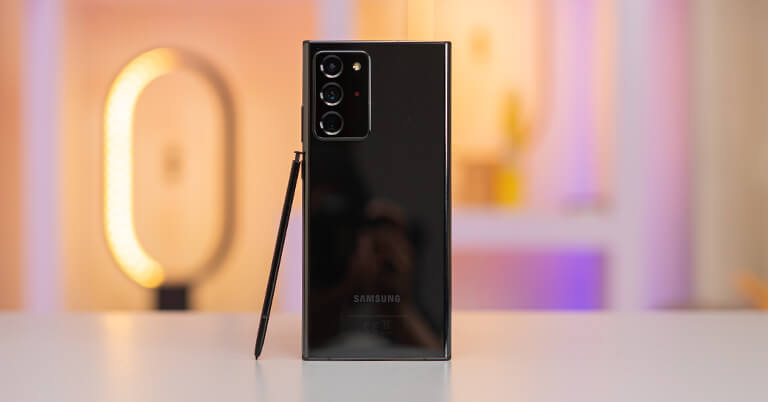
August is the month when Samsung launches its flagship “Note” lineup of smartphones. With the ongoing pandemic and the overall trend in the smartphone industry, most of us had thought (or even hoped) that the company didn’t unveil its top-of-the-line product. However, the company still went on with the launch of the new Galaxy Note 20 series. And since its arrival, I have been using the Samsung Galaxy Note 20 Ultra as my primary phone alongside the S20 Ultra for review to see how much Samsung has improved over 6 months.
Also, if you’re planning to get yourself a Note this year, I’d strictly advise avoiding the regular Note 20 because of its ridiculous pricing. Note 20 Ultra is the complete package of the two and Samsung is clearly luring you to buy it instead. Let’s discover more about the Samsung Galaxy Note 20 Ultra in this review.
Samsung Galaxy Note 20 Ultra Specifications:
- Body: 6.49 x 3.04 x 0.32-inches; 208gm; IP68 certification
- Display: 6.9-inches Dynamic AMOLED 2X “Infinity-O” panel; HDR10+; Always-on Display; 496 PPI; 120Hz Refresh Rate; 240Hz Touch Sampling Rate; Corning Gorilla Glass Victus; Curved
- Resolution: WQHD+ (3088 x 1440 pixels); 19.3:9 aspect ratio
- Chipset: Exynos 990 (Global) / Snapdragon 865+ (USA, China, South Korea); 7nm+ Mobile Platform
- CPU:
- Octa-core (2×2.73 GHz Mongoose M5 & 2×2.50 GHz Cortex-A76 & 4×2.0 GHz Cortex-A55) – Global (including Nepal)
- Octa-core (1×3.0 GHz Kryo 585 & 3×2.42 GHz Kryo 585 & 4×1.8 GHz Kryo 585) – USA, China, South Korea
- GPU: Mali-G77 MP11 (Global) / Adreno 650 (USA, China, South Korea)
- RAM: 12GB (5G) / 8GB (LTE); LPDDR5
- Storage: 128/256/512GB (5G) / 256/512GB (LTE); UFS 3.1 (expandable up to 1TB using micro SD card)
- Software & UI: One UI 2.5 on top of Android 10
- Rear Camera: Triple-camera;
– 108MP, f/1.8 primary shooter; 0.8µm; PDAF, OIS
– 12MP, f/2.2 ultra-wide lens; 1.4µm; 120˚ FOV
– 12MP, f/3.0 telephoto lens; 5x optical zoom; 50X Space Zoom
– Laser AF sensor
– LED flash - Front Camera: 10MP, f/2.2 lens; 1.22µm; Dual Pixel PDAF
- Security: In-display Fingerprint Scanner (Ultrasonic)
- Audio: Stereo Speakers (Tuned by AKG); aptX codec
- Connectivity: Hybrid Dual-SIM (Nano-SIM and/or eSIM), WiFi 802.11 a/b/g/n/ac/ax, Bluetooth 5.0, GPS/AGPS/GLONASS/GALILEO/BDS, USB 3.2 Type-C, UWB, Samsung Wireless DeX, sub-6GHz/mmWave 5G, 4G LTE
- Battery: 4500mAh with 25W fast charging; 15W wireless charging
- Colors: Mystic White, Mystic Bronze, Mystic Gray
- Price in Nepal: Rs. 139,999 (8/256GB)
Samsung Galaxy Note 20 Ultra Review:
Design
- Corning Gorilla Glass Victus back & front, metallic frame
- Slight curves but an overall classic boxy design
- Massive camera bump at the back & the relocated S Pen
Anyways, let’s begin this review of the Galaxy Note 20 Ultra with its design. My first impression when having the phone in my hand was like – wow, that’s a big phone. Putting it side-by-side with the S20 Ultra, we can notice the trademark boxy design with sharp edges on the Note. I also found the Note 20 Ultra to be a little more comfortable and lightweight to hold which is mainly because of its smaller battery.
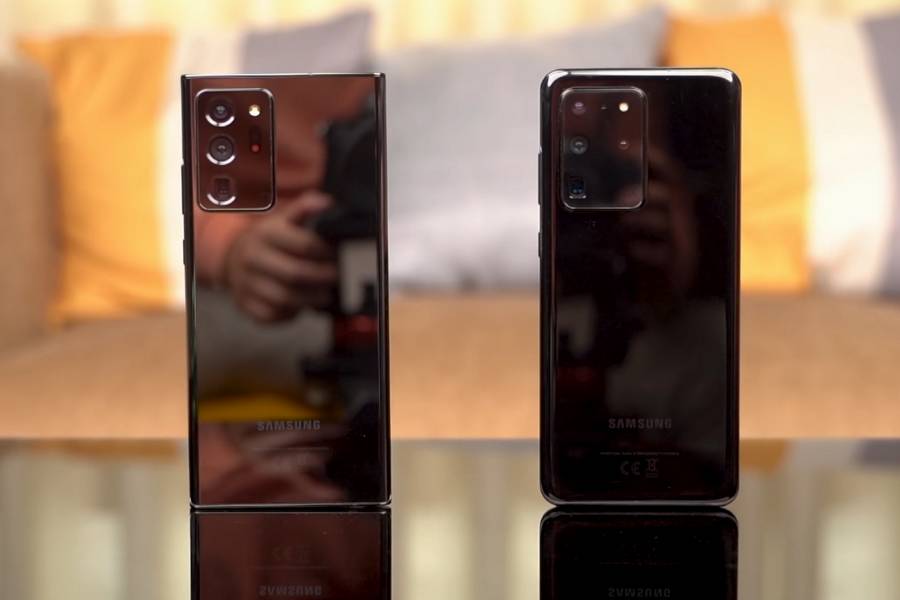
The color options see a much-needed overhaul as well because frankly, the grey or black options of the S20 Ultra look quite drab and boring. Here, I have the Mystic Black variant of the Note 20 Ultra which unfortunately attracts a lot of fingerprints & smudges.
So if this is the one you’re going after, make sure to slap in a skin or a protective case – or better yet, get the “Mystic Bronze” variant instead which is the talk of the town. Besides the gorgeous color tone, it also has a matte finish thus getting rid of our aforementioned issue.
A new home for the S Pen
Samsung also decided to relocate the S Pen to the left on the Note 20 series, which is mainly to cope with the internal circuitry for these massive-massive cameras that are housed inside this giant camera bump – thicker than the one in S20 Ultra. This is going to throw away a lot of Note fanatics or even newcomers who favor their right hand. Even after a while of using the phone, I am yet to get used to the new position.

Samsung says it’s for the better since most people hold the phone in their right hand and it’s easier for them to pull the S Pen when it’s placed on the opposite side. So, I’m willing to give it a shot.
Moving on, the Galaxy Note 20 comes with the IP68 dust/water resistance as expected but what’s exciting is that it is the first phone to feature Corning’s latest Gorilla Glass Victus – both at the front and at the back. Compared to the last-gen GG6, this promises twice more scratch resistance and it can also survive up to a 2-meter (6.5 foot) drop. But, Samsung has left out the Victus on the camera module.
Therefore, make sure you attach a nice tempered glass on the rear camera module or toughen up the phone with a durable case since repairing the phone in case it breaks is going to a whole lot of money. For instance, the AMOLED panel alone will set you back an upwards of $400!
Display
- 6.9-inches WQHD+ Dynamic AMOLED 2X “Infinity-O” panel
- Up to 120Hz refresh rate; 240Hz touch sampling rate
- Uses LTPO for variable refresh rate technology
Speaking of the display, the Note 20 Ultra boasts a gigantic 6.9-inches Quad-HD Dynamic AMOLED panel with up to 120Hz of refresh rate. And according to DisplayMate, this phone has the best AMOLED display ever. Samsung has always been a pioneer of the smartphone display industry and this announcement really doesn’t come as a surprise to anyone. However, in real-life usage, I didn’t find it that different from the one on the S20 series. Note 20 Ultra has a peak brightness of 1500 nits so visibility was never going to be of any issue.
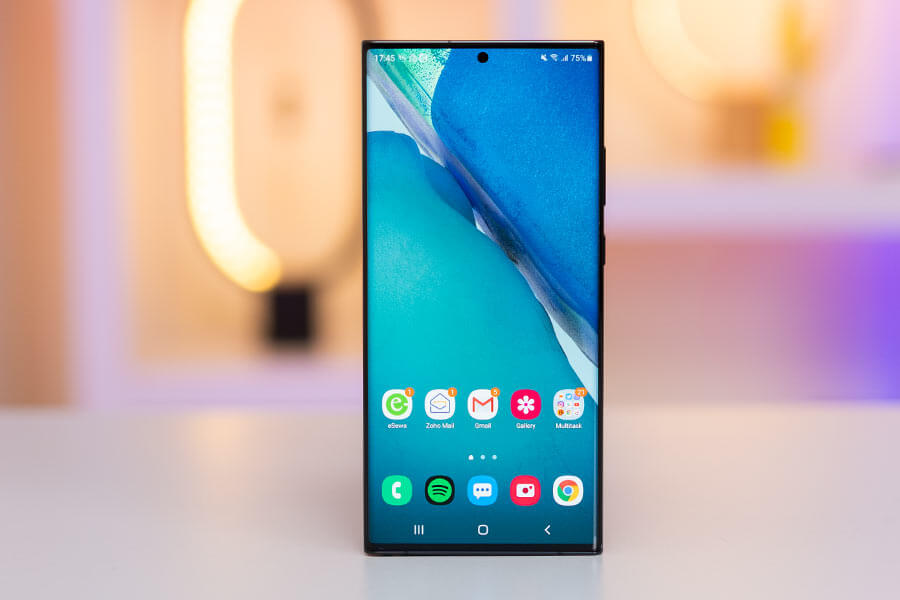
Like the S20 series, the company is still maxing out the 120Hz refresh rate to Full-HD+ resolution instead of QHD+. But interestingly, this panel has a Low-Temperature Polycrystalline Oxide (LTPO) backplane technology because of which the display can adjust the refresh rate in itself depending upon the content on the screen – potentially saving battery in the process.
For example: if you’re watching a movie or similar content, its Variable Refresh Rate (VRR) technology will set the display to 24Hz, or if you’re scrolling through the phone or playing a handful of supported games, it will get buttery smooth at the full 120Hz. Note 20 Ultra’s display can go all the way down to 10Hz refresh rate for certain static contents.
Ultra-sonic fingerprint sensor
The display is also home to an ultra-sonic in-display fingerprint scanner and it’s almost similar in performance to the S20 Ultra. By that I mean, it’s not as fast as… say the ones from OnePlus or OPPO but gets the job done.
But since this is an ultra-sonic sensor unlike the more common optical fingerprint scanners, it works even when your fingers are wet. Additionally, it is more secure as well. Even in a dark environment, the sensor doesn’t rely on shining bright light either. So, if you ask me, I prefer Samsung’s implementation compared to other companies.
Performance… and the controversy
- Octa-core Samsung Exynos 990 SoC (7nm) – Global
- 8/12GB of LPDDR5 RAM and up to 512GB of UFS 3.1 storage (expandable)
Time to get salty… and rightfully so. There has always been a controversy among the Samsung community since the company chooses to ship the premium “S” and “Note” lineup of smartphones with different chipsets depending upon the region. Certain markets like the US, China, and South Korea enjoy the ones with Qualcomm’s Snapdragon silicon while the rest of the world gets the one with Samsung’s own Exynos brand of chipsets.
had they been some sort of equals, we wouldn’t even be having this conversation. but that’s simply not the case.
Many people (us included) had already bashed the company regarding the use of Exynos 990 in its S20 series while the Snapdragon 865 variant was much more powerful. If you recall like 4 months, many Samsung fans were already at the peak of their frustration regarding the use of Exynos 990 in the S20 series; to the point where there was an online petition titled “Stop selling us inferior Exynos phones”.
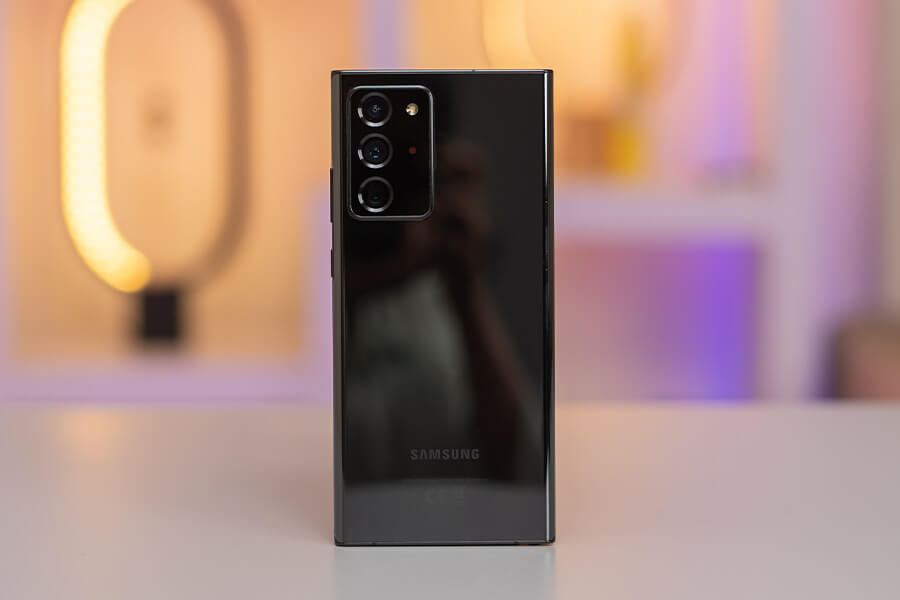
And to see the company take that mistake a step further by shipping select markets with even more powerful Snapdragon 865+ while the rest of the world is stuck with the same Exynos 990 is honestly very infuriating. The 865+ pretty much thrashes its Exynos counterpart with a much better CPU and GPU performance. Looking at the benchmark scores, you can see how it has about 15-20% better results and you know how much that translates to real-life usage.
Compromised performance on a premium phone
So it’s pretty disappointing to find out that while you’re paying a premium price for the phone, you’re not getting the best performance you’d expect. Samsung’s Exynos brand of silicons needs to do a whole lot better if it ever seeks to compete against the ones from Qualcomm. The company has been in talks with AMD to embed its RDNA-based GPU into flagship Exynos SoC which has us excited in the long run but surely, Samsung must’ve done something about the disparity that currently exists.
Both Exynos 990 and Snapdragon 865+ are 5G capable chipsets that support both sub-6GHz and mmWave spectrum. But depending upon the region, Samsung also ships 4G LTE variants of the Note 20 Ultra, which is the case here in Nepal. That is understandable seeing how many countries still don’t a viable 5G infrastructure. Similarly, the 5G and 4G configs also come with different memory options.
Here, Note 20 Ultra (4G) comes with 8GB of LPDDR5 RAM and either 256 or 512GB of UFS 3.1 internal storage. Similarly, the 5G model has 12GB of RAM and an additional 128GB model besides the ones above.
Keeping that aside for a moment, you guys might know that I use the Galaxy S20+ as my daily driver, and shifting to the Note 20 Ultra was not that big of a deal – at least to me. Its performance is as solid as I’d expected and everything runs flawlessly including multitasking between apps or just scrolling around the phone’s UI. Yet, just like the S20 series, the Note 20 Ultra also heats up quite easy when you gaming for a while or are doing some quite heavy tasks like multitasking alongside navigation with full brightness, recording high-res videos for a while, etc.
Gaming
Gaming on the phone is decent as well but like I said earlier, the Exynos 990 is inferior to the 865+. As a result, its Mali-G77 MP11 GPU can’t push certain games like PUBG Mobile to their max settings (Extreme frame rate and HDR graphics) whereas it’s a piece of cake for the other variant.
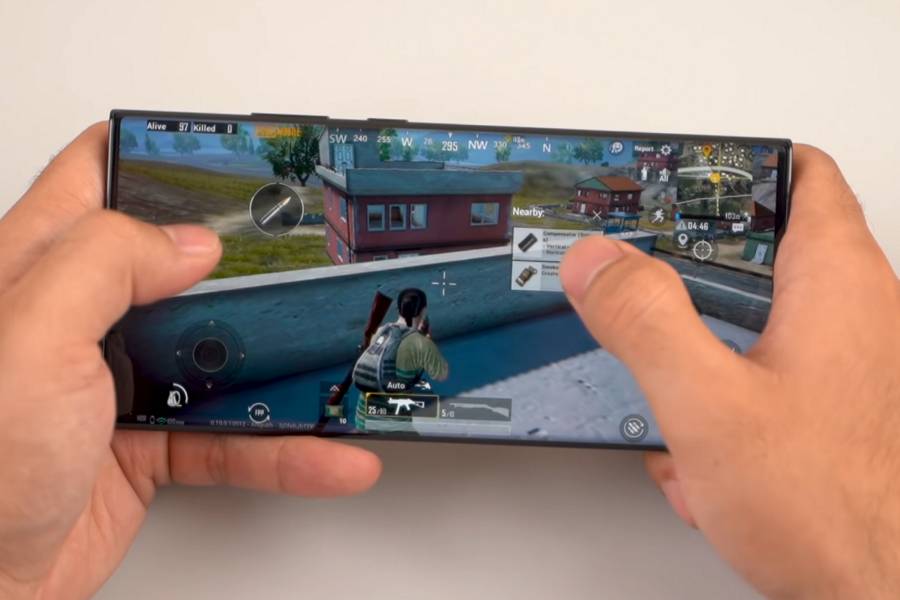
Likewise, games like PUBGm, COD Mobile, etc. don’t support high refresh rate as of now to make use of phones with smoother display panels. As of now, PUBGm has introduced a 90Hz support which is exclusive to certain OnePlus phones for now and I hope it gets a wider launch ASAP.
Furthermore, the Note 20 Ultra also has Ultra-Wideband (UWB) connectivity that we first saw in Apple’s iPhone 11 series. Unlike Bluetooth, WiFi, or NFC, UWB operates at a very high frequency and allows for a much faster data transfer between devices. With this, Note 20 Ultra could also be used as a digital key. Google’s latest “Nearby Share” data transfer feature (just like Apple’s AirDrop) will also be much faster between UWB-enabled Galaxy devices.
S Pen
- Reduced latency from 45ms to just 9ms
- New AI Laser Point Prediction feature on top of air gestures
Now let’s talk about the belle of the ball of any Galaxy Note device – the S Pen. Besides shifting it to the left, Samsung has made quite a few improvements to this year’s S Pen but the most important of them all is the input latency. If you don’t know what latency is, allow me to briefly explain it. Latency is the time it takes for your touch input to be registered by the display, processed by the phone, and then reflected back on to the display. Typically measured in milliseconds (ms), the lesser latency, the better.
While the Galaxy Note 10 series had 45ms input latency, Samsung has managed to bring it down to just 9ms on the Note 20 Ultra and 26ms on the standard Note 20.
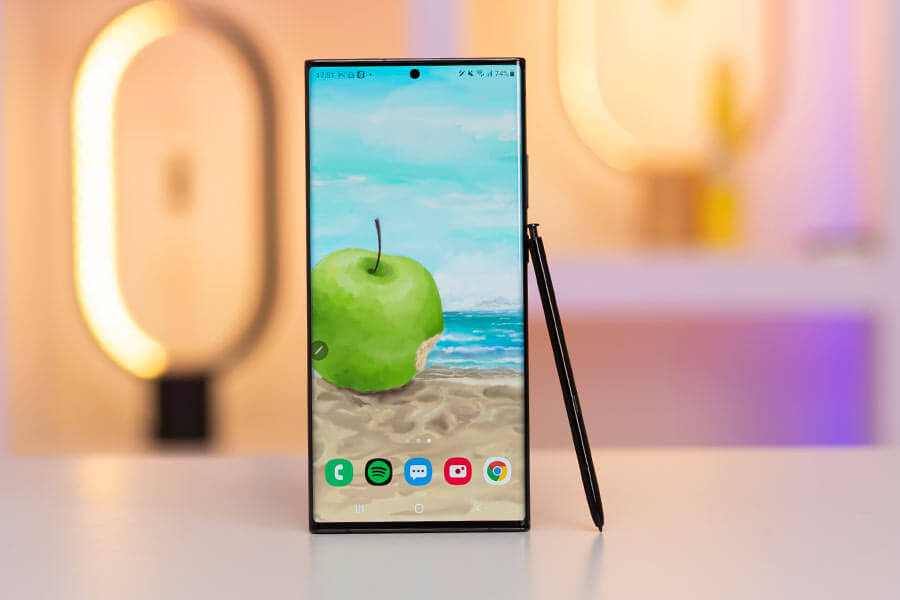
The minimal latency paired with a 120Hz display and Samsung’s new AI Laser Point Prediction feature which predicts your next move depending on our current writing behavior means this S Pen gives off an almost paper-like writing experience. I’m not an artist or anything so the one on the Note 10 series fared well with me too. But if you are one, this makes all the difference in the world.
Besides latency
Samsung has expectedly borrowed many other S Pen features from its predecessor onto the Note 20 series with some handy improvements. Now, you can annotate PDF files, make e-signatures, etc. which is very handy. Similarly, you can also write notes in a PowerPoint and record an audio comment on it as well making it easy for others to drop their feedback.
And since the S Pen has a gyro sensor, it has some useful or rather gimmicky air gestures that unfortunately don’t work 100% of the time. For instance, the new gestures on the Note 20 lineup include a series of hand movements to navigate around the phone, take screenshots, etc.
DeX
- Now fully wireless in Smart TVs with Miracast
Let’s quickly talk about the DeX. This is Samsung’s attempt at transforming your phone into a PC. While the feature required a bunch of peripherals like an HDMI adapter, etc. the feature is fully wireless now. You can turn your Smart TV that supports MediaTek’s Miracast feature into a DeX monitor – provided that both TV and the phone are connected to the same network.
Because Samsung promises a desktop-like experience with DeX (that in itself is an ambiguous claim), it’s not wrong of us to expect something fast & responsive. However, that hasn’t been the case with my usage. The UI is a little too sluggish to my liking and therefore I rarely use this feature. And about wireless DeX, Samsung says it works best on its own Smart TVs released in 2019 or later but I didn’t have one lying around. So, I tried it out on my non-Samsung TV and the experience was pretty much unusable.
Cameras
- Triple cameras at the back plus a Laser AF system
- (108MP ISOCELL HM1 sensor, 12MP ultrawide, 12MP telephoto)
- 10MP front-facing camera inside the Infinity-O cutout
Finally, let’s talk about the cameras. It has a triple-lens system at the back which comprises the massive 108MP ISOCELL Bright HM1 sensor from the S20 Ultra, a 12MP ultrawide camera, and a 12MP telephoto camera capable of 5x lossless optical zoom and up to 50x digital Space Zoom. There’s also an additional Laser AutoFocus (AF) sensor.
We saw how the S20 Ultra failed to lock focus on close-range objects because of its physically massive sensor, especially in a dimly-lit environment. Thankfully, the Laser AF system fixes that on the Note 20 Ultra.
Improved AutoFocus
And yeah, during my review, I noticed improved autofocus on the Samsung Galaxy Note 20 Ultra compared to the S20 Ultra.
Even when taking pictures of subjects like dogs, they retain good focus and sharpness.
Nighttime Images
The nighttime images on the Note 20 Ultra (from both primary and wide-angle lens) has also been slightly improved over the S20 Ultra – which was already incredible, to begin with.
The colors are slightly better and it may be because of the improved autofocus but it takes images in night mode a little faster. Remember, both phones that I have with me have the same Exynos 990 SoC with the same Image Signal Processor (ISP).
Normal & Wideangle Images
Getting to the normal daytime images, they are excellent, have good contrast/colors, exposure, and that classic Samsung vibrancy.
Images from the ultrawide camera share the same story.
But, Samsung has worked to improved portrait images and it shows.
Portrait Images
Here, you can see how the portrait images on the Note 20 Ultra have a more balanced skin tone compared to the ones from S20 Ultra.
As you can see, the S20 Ultra tends to darken certain portions while creating the bokeh effect.
Selfie Images
Moving on, selfies and portrait selfies are excellent as well with great colors and sharpness.
And once again, the Galaxy Note 20 Ultra yields noticeably better images compared to the S20 Ultra when it comes to selfies in low-light conditions.
Telephoto Images
Now let us talk about the telephoto lens. Samsung has stepped away from the 100x zoom and the Note 20 Ultra, therefore, caps out at 50x Space Zoom.
It can shoot loss-less images up to 5x zoom and their quality is quite solid – which goes on up to 10x digital zoom.
Yet, the images from 50x Space Zoom still aren’t that useful although they’re a little better than the one from S20 Ultra.
Videos
Getting to the videos, there are a lot of options to play around with just like the S20 Ultra. You can still click 8K/24fps videos but its outcome isn’t that great. However, 4K/60fps are really good with great stabilization and color reproduction. For the best stabilization, you can select the “Super Steady Mode”. I do have a little complaint which is how Note 20 Ultra’s ultrawide camera cannot shoot videos in 4K/60fps.
The front camera is a 10MP sensor residing inside a small punch-hole cutout in the center. It can shoot 4K/60fps videos as well with an excellent stabilization. Other features like Slowmo, Super Slowmo, etc. work great too. Overall, Note 20 Ultra is one of the best options for mobile videography alongside the iPhone 11 series. Besides videos, this phone is also one of the best camera phones currently out there in the market.
Battery
- 4500mAh battery with 25W fast wired charging
- 15W wireless charging and Wireless PowerShare
When it comes to the battery, I was a little disappointed during the review because I was hoping for the 5000mAh cell on the Samsung Galaxy Note 20 Ultra just like the S20 Ultra. However, the company has gone with a smaller 4500mAh battery which is mainly because of the extra space for the S Pen, while maintaining a pocketable form factor. The smaller battery paired with a giant display that has a 120Hz refresh rate didn’t result in an impressive endurance that I’d hoped for.
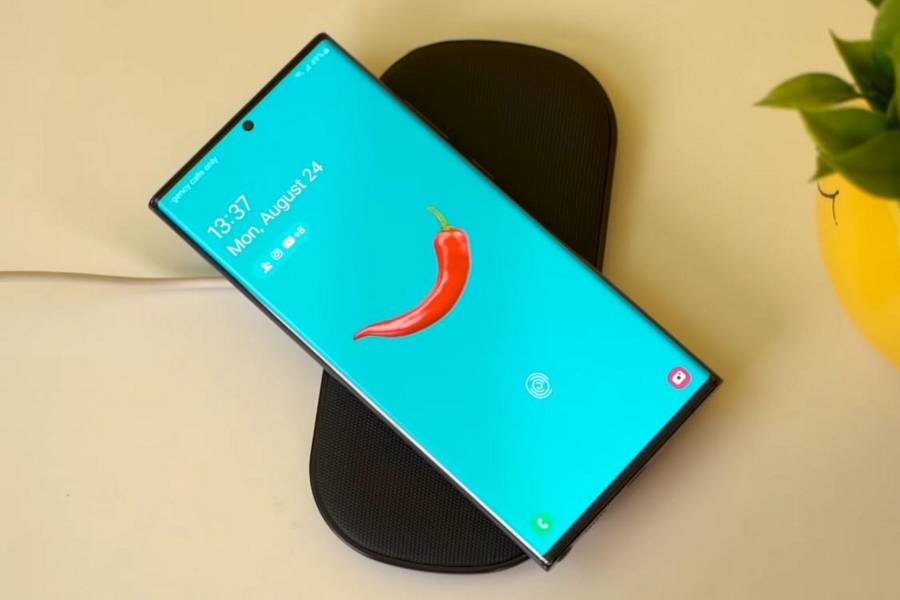
Its endurance is B+ which could last you a day but when pushing it to the extreme, you may be left with no charge at the end of the day. There’s even marginal battery drainage under standby mode. I’m someone who goes to sleep after charging the phone to 100% and after 6 – 7 hours of sleep, I wake up to about 92 – 93% charge only. This issue was also persistent with S20 Ultra though I’m yet to see someone with their Snapdragon variant complain about this overnight battery drain issue.
Surprisingly, Samsung has abandoned the 45W fast charging for the Note 20 Ultra and rather sticks to a slower 25W charging protocol instead. With this, it took me about 1 hour and 15 minutes to fully charge the phone. Wireless charging, on the other hand, is painfully slow as well and the 15W power takes around 2 hours to juice up the phone.
Conclusion
To wrap it all up, Note 20 Ultra is a solid phone which could very well be the best phone right now. It’s built well, has an excellent display, cameras, and the S Pen has been improved a lot on this iteration. However, getting the objectively inferior Exynos chipset on a phone for which you’d have to fork out over $1000 simply doesn’t feel acceptable – and we’re right to complain Samsung about it.
Because of this variation, many people are skipping Samsung flagships and the market trend definitely reflects on that. My friend who is a Civil Engineer was also skeptical about buying the Note 20 Ultra because of the very same reason. Having said that, most people can easily get by with the Exynos 990. And if you’re someone who doesn’t make use of the S Pen, you can even go for the Galaxy S20 series instead and save a few bucks.
- Watch our video review of the Samsung Galaxy Note 20 Ultra.
Samsung Galaxy Note 20 Ultra Review: Pros & Cons
Pros:
- Excellent design & surprisingly lightweight for such a big phone
- Samsung’s most durable phone thanks to Gorilla Glass Victus
- Terrific Super AMOLED display with a variable refresh rate
- Improved S Pen functionalities with an almost paper-like latency
- Improved zoom, low-light, & portrait camera performance compared to S20 Ultra
Cons:
- *the usual Exynos complaint*
- Battery endurance isn’t that great, struggling to last a full day
- An underwhelming 25W wired & 15W wireless charging








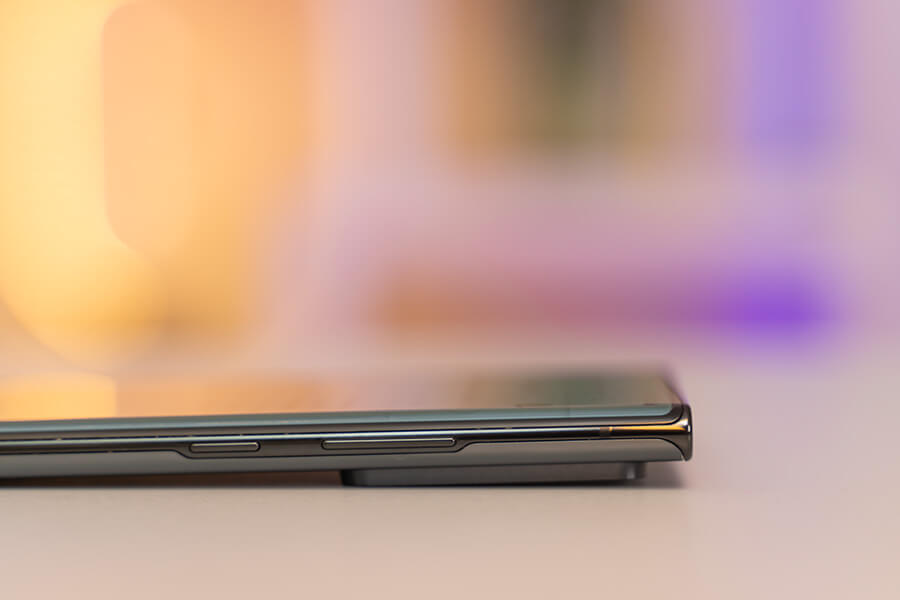

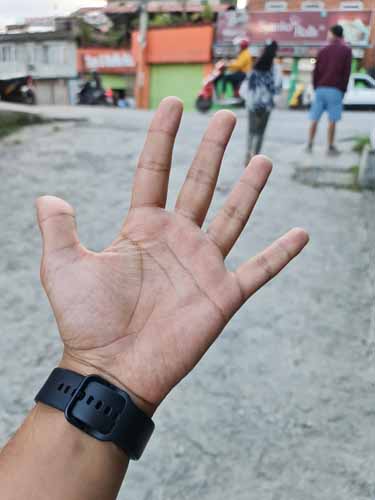








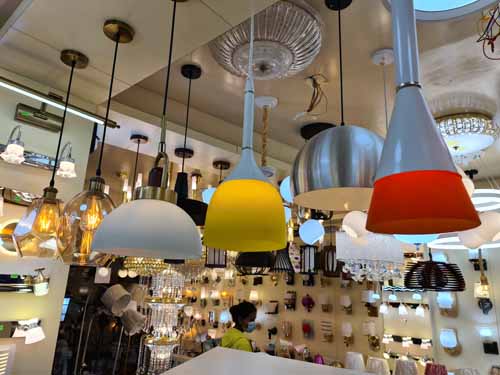




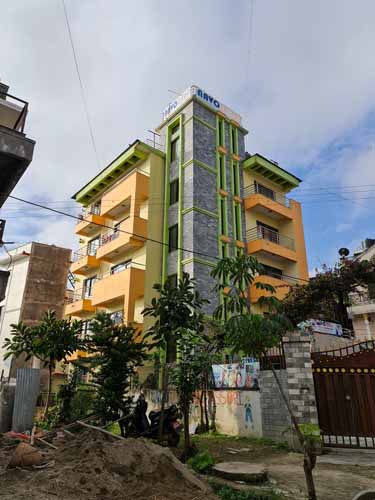
















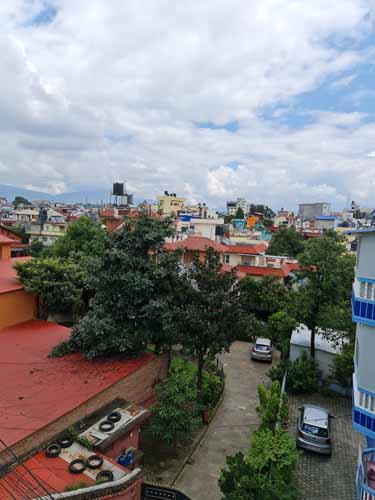
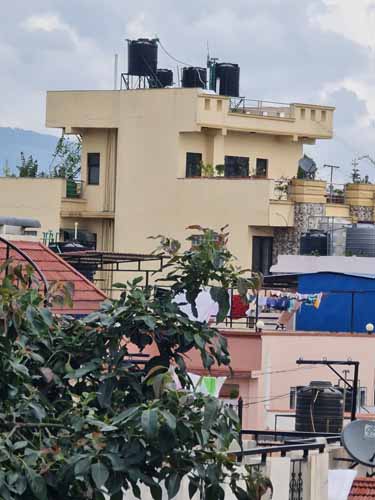



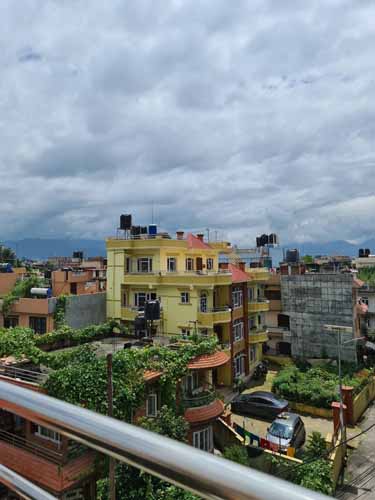
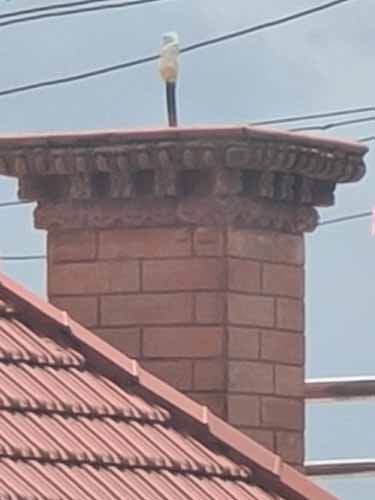

![Best Gaming Laptops in Nepal Under Rs. 250,000 (रु 2.5 Lakhs) [2025] Best Gaming Laptops Under 2.5 lakhs in Nepal [Feb 2025 Update]](https://cdn.gadgetbytenepal.com/wp-content/uploads/2025/02/Best-Gaming-Laptops-Under-2.5-lakhs-in-Nepal-Feb-2025-Update.jpg)
![Best Gaming Laptops in Nepal Under Rs. 120,000 (रु 1.2 Lakhs) [2025] Best Budget Gaming Laptops Under Rs 120000 in Nepal 2025 Update](https://cdn.gadgetbytenepal.com/wp-content/uploads/2025/05/Best-Budget-Gaming-Laptops-Under-Rs-120000-in-Nepal-2024-Update.jpg)
![Best Laptops Under Rs. 80,000 in Nepal [2025] Best Laptops Under 80,000 in Nepal March 2025 Update](https://cdn.gadgetbytenepal.com/wp-content/uploads/2025/03/Best-Laptops-Under-80000-in-Nepal-March-2025-Update.jpg)
![Best Gaming Laptops in Nepal Under Rs. 200,000 (रु 2 Lakhs) [2025] Best gaming lapotp under 2 lakhs Nepal Feb 2025](https://cdn.gadgetbytenepal.com/wp-content/uploads/2025/01/Best-Gaming-Laptops-Under-2-Lakh-Nepal-Feb-2025-Update.jpg)

![Best Mobile Phones Under Rs. 15,000 in Nepal [Updated 2025] Best Phones Under 15000 in Nepal 2024 Budget Smartphones Cheap Affordable](https://cdn.gadgetbytenepal.com/wp-content/uploads/2024/03/Best-Phones-Under-15000-in-Nepal-2024.jpg)
![Best Mobile Phones Under Rs. 20,000 in Nepal [Updated] Best Mobile Phones Under NPR 20000 in Nepal 2023 Updated Samsung Xiaomi Redmi POCO Realme Narzo Benco](https://cdn.gadgetbytenepal.com/wp-content/uploads/2024/01/Best-Phones-Under-20000-in-Nepal-2024.jpg)
![Best Mobile Phones Under Rs. 30,000 in Nepal [Updated 2025] Best Phones Under 30000 in Nepal](https://cdn.gadgetbytenepal.com/wp-content/uploads/2025/01/Best-Phones-Under-30000-in-Nepal.jpg)
![Best Mobile Phones Under Rs. 40,000 in Nepal [Updated 2025] Best Phones Under 40000 in Nepal 2024 Smartphones Mobile Midrange](https://cdn.gadgetbytenepal.com/wp-content/uploads/2024/02/Best-Phones-Under-40000-in-Nepal-2024.jpg)
![Best Mobile Phones Under Rs. 50,000 in Nepal [Updated 2025] Best Phones Under 50000 in Nepal](https://cdn.gadgetbytenepal.com/wp-content/uploads/2025/01/Best-Phones-Under-50000-in-Nepal.jpg)
![Best Flagship Smartphones To Buy In Nepal [Updated] Best flagship phone 2025](https://cdn.gadgetbytenepal.com/wp-content/uploads/2024/07/Best-Flagship-Phones-who-is-it-ft-1.jpg)